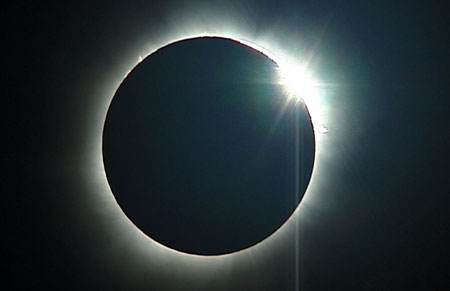-
 The sight of a 1,000 years
The sight of a 1,000 years

THIRUVANANTHAPURAM: Friday’s annular solar eclipse will be a once-in-a-millennium celestial alignment - the longest in the third millennium.
In an annular solar eclipse, the moon, because of its greater distance from the earth, will not mask the sun completely as it would in a total solar eclipse. Since the moon’s apparent size will appear smaller than the solar orb, the sun will appear as a ring, or annulus.
``Considering the earth as a whole, the eclipse begins at 9.35 a.m. IST, when the shadow of the moon touches the earth at local sunrise at a point in central Africa. The eclipse ends at 3.38 p.m. IST when the moon’s shadow leaves the earth at local sunset at a point in South China,’’ said S. Sen, director, Positional Astronomy Centre, Kolkata.
``At approximately 10.48 a.m., the annular path of the eclipse will touch the earth at sunrise at a point in the Central African Republic. The shadow crosses over the southern tip of Chad, the Central African Republic, the Democratic Republic of Congo, Uganda, Kenya, southern Somalia, the Indian Ocean, south India, north Sri Lanka, south-east Bangladesh, Myanmar and south-east China,’’ he said.
The maximum annularity will be in the Arabian Sea - 11.04 minutes at 12.37 p.m. IST. The annular phase will end at 2.25 p.m. IST at a point in southeast China. In India, Dhanushkodi and Rameswaram in Tamil Nadu, in the central line of the eclipse, will experience the longest duration of annularity - 10.09 minutes and 10.08 minutes respectively.
Thiruvananthapuram is another site offering a good view. Varkala near Thiruvananthapuram lies on the northern edge of the annular path, offering a rare view of Baily’s Beads, sunlight reflecting off the rugged moonscape and appearing as beads of light to viewers on earth.
Last edited by minisoji; 01-15-2010 at 05:17 AM.
 Posting Permissions
Posting Permissions
- You may not post new threads
- You may not post replies
- You may not post attachments
- You may not edit your posts
-
Forum Rules





 Reply With Quote
Reply With Quote
Bookmarks